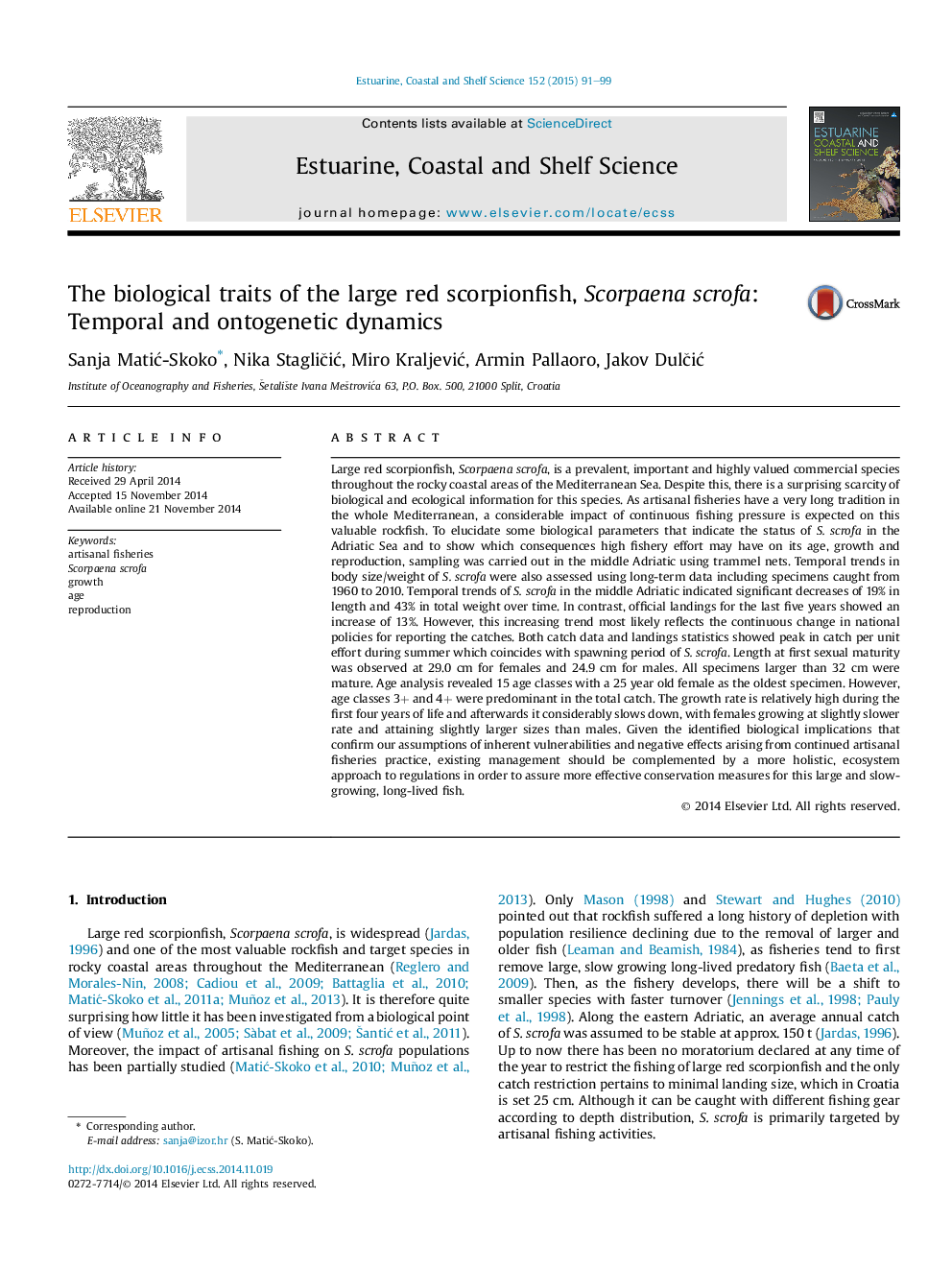| Article ID | Journal | Published Year | Pages | File Type |
|---|---|---|---|---|
| 4539548 | Estuarine, Coastal and Shelf Science | 2015 | 9 Pages |
•Scorpaena scrofa indicated decreases in length and weight over last fifty years.•The peak in CPUE during the summer coincides with spawning period of S. scrofa.•Official MLS is inappropriate regarding the estimated length at first maturity.•Age analysis revealed 15 age classes but 3+ and 4+ were predominant in the catch.•Continued artisanal fisheries practice generated negative biological implications.
Large red scorpionfish, Scorpaena scrofa, is a prevalent, important and highly valued commercial species throughout the rocky coastal areas of the Mediterranean Sea. Despite this, there is a surprising scarcity of biological and ecological information for this species. As artisanal fisheries have a very long tradition in the whole Mediterranean, a considerable impact of continuous fishing pressure is expected on this valuable rockfish. To elucidate some biological parameters that indicate the status of S. scrofa in the Adriatic Sea and to show which consequences high fishery effort may have on its age, growth and reproduction, sampling was carried out in the middle Adriatic using trammel nets. Temporal trends in body size/weight of S. scrofa were also assessed using long-term data including specimens caught from 1960 to 2010. Temporal trends of S. scrofa in the middle Adriatic indicated significant decreases of 19% in length and 43% in total weight over time. In contrast, official landings for the last five years showed an increase of 13%. However, this increasing trend most likely reflects the continuous change in national policies for reporting the catches. Both catch data and landings statistics showed peak in catch per unit effort during summer which coincides with spawning period of S. scrofa. Length at first sexual maturity was observed at 29.0 cm for females and 24.9 cm for males. All specimens larger than 32 cm were mature. Age analysis revealed 15 age classes with a 25 year old female as the oldest specimen. However, age classes 3+ and 4+ were predominant in the total catch. The growth rate is relatively high during the first four years of life and afterwards it considerably slows down, with females growing at slightly slower rate and attaining slightly larger sizes than males. Given the identified biological implications that confirm our assumptions of inherent vulnerabilities and negative effects arising from continued artisanal fisheries practice, existing management should be complemented by a more holistic, ecosystem approach to regulations in order to assure more effective conservation measures for this large and slow-growing, long-lived fish.
